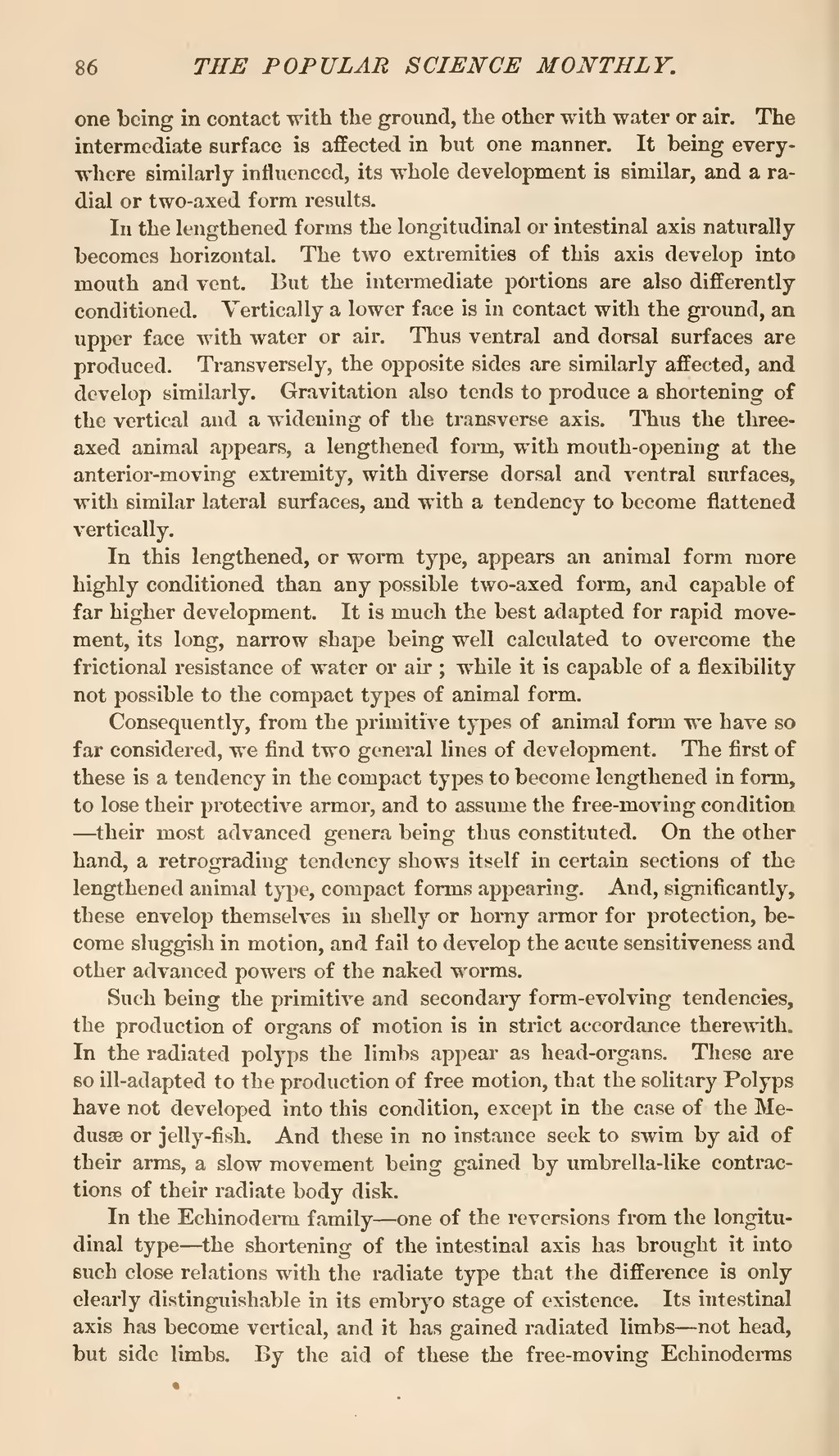one being in contact with the ground, the other with water or air. The intermediate surface is affected in but one manner. It being everywhere similarly influenced, its whole development is similar, and a radial or two-axed form results.
In the lengthened forms the longitudinal or intestinal axis naturally becomes horizontal. The two extremities of this axis develop into mouth and vent. But the intermediate portions are also differently conditioned. Vertically a lower face is in contact with the ground, an upper face with water or air. Thus ventral and dorsal surfaces are produced. Transversely, the opposite sides are similarly affected, and develop similarly. Gravitation also tends to produce a shortening of the vertical and a widening of the transverse axis. Thus the three axed animal appears, a lengthened form, with mouth-opening at the anterior-moving extremity, with diverse dorsal and ventral surfaces, with similar lateral surfaces, and with a tendency to become flattened vertically.
In this lengthened, or worm type, appears an animal form more highly conditioned than any possible two-axed form, and capable of far higher development. It is much the best adapted for rapid movement, its long, narrow shape being well calculated to overcome the frictional resistance of water or air; while it is capable of a flexibility not possible to the compact types of animal form.
Consequently, from the primitive types of animal form we have so far considered, we find two general lines of development. The first of these is a tendency in the compact types to become lengthened in form, to lose their protective armor, and to assume the free-moving condition—their most advanced genera being thus constituted. On the other hand, a retrograding tendency shows itself in certain sections of the lengthened animal type, compact forms appearing. And, significantly, these envelop themselves in shelly or horny armor for protection, become sluggish in motion, and fail to develop the acute sensitiveness and other advanced powers of the naked worms.
Such being the primitive and secondary form-evolving tendencies, the production of organs of motion is in strict accordance therewith. In the radiated polyps the limbs appear as head-organs. These are so ill-adapted to the production of free motion, that the solitary Polyps have not developed into this condition, except in the case of the Medusæ or jelly-fish. And these in no instance seek to swim by aid of their arms, a slow movement being gained by umbrella-like contractions of their radiate body disk.
In the Echinoderm family—one of the reversions from the longitudinal type—the shortening of the intestinal axis has brought it into such close relations with the radiate type that the difference is only clearly distinguishable in its embryo stage of existence. Its intestinal axis has become vertical, and it has gained radiated limbs—not head, but side limbs. By the aid of these the free-moving Echinoderms

